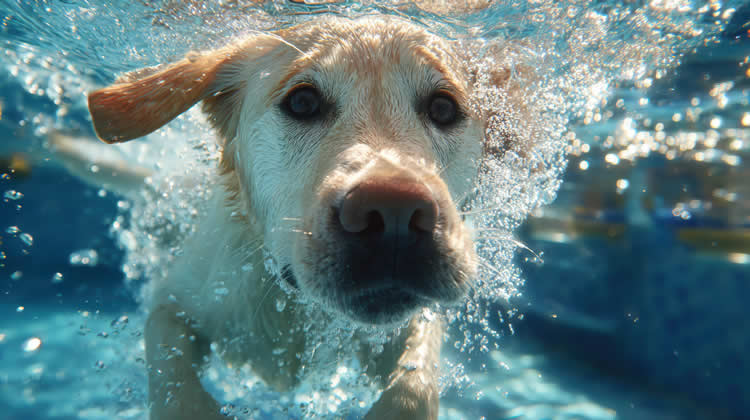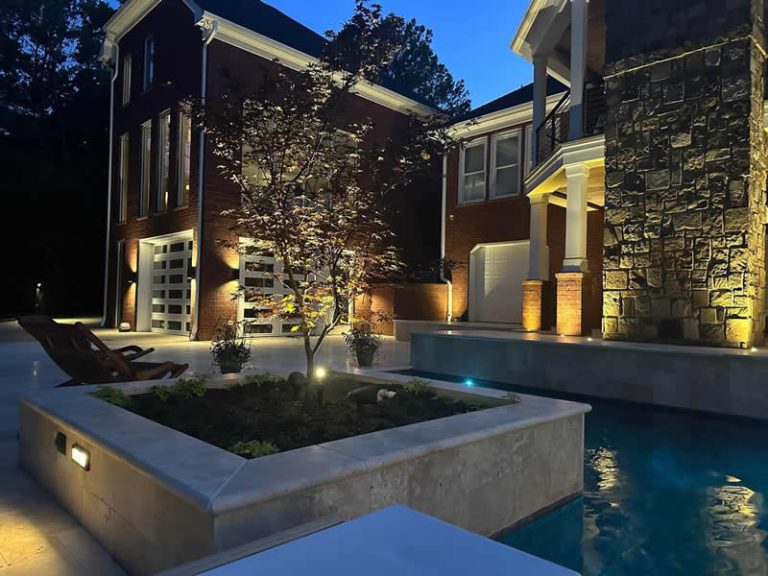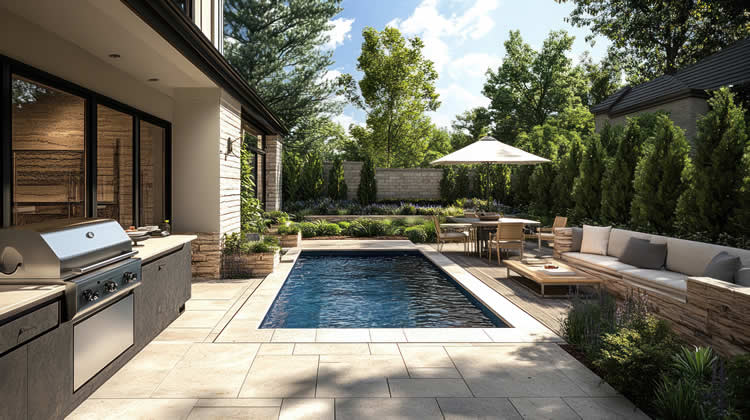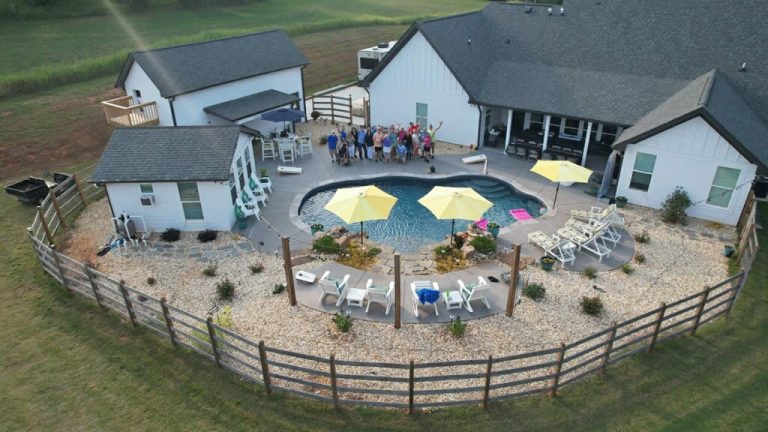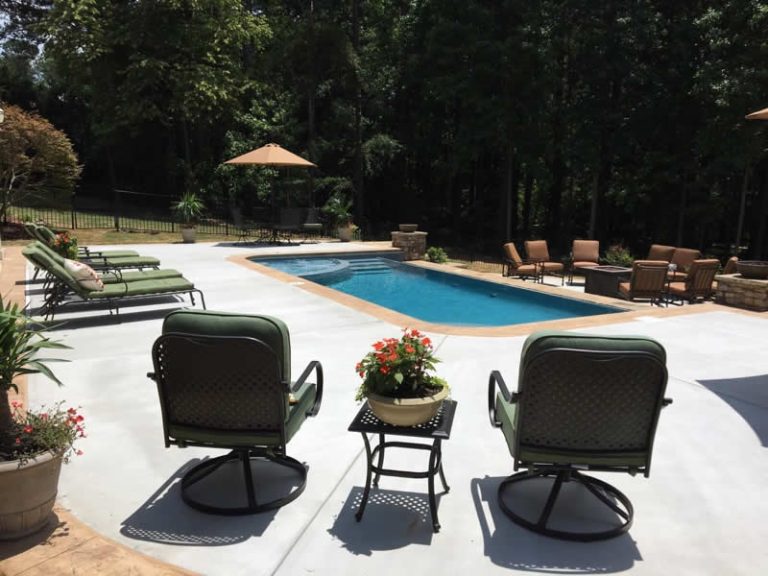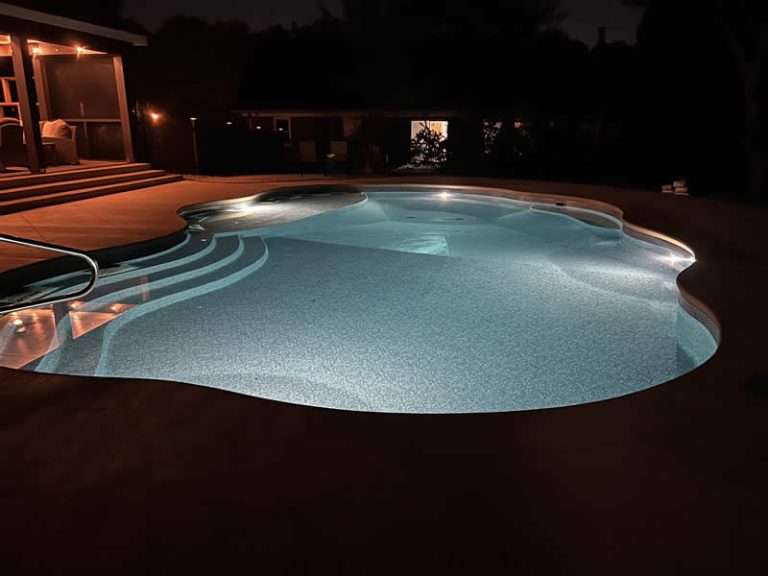Pet-Friendly Pool Designs and Safety Tips for Georgia Homeowners
If you live in Georgia, there’s a good chance your dog thinks summer means pool season too. From golden retrievers who leap right in to hesitant pups who prefer dipping their paws, pools can be a fun way to keep pets cool — if they’re designed safely.
The truth is, not all pools are built with pets in mind. Slippery edges, steep drop-offs, or harsh chemicals can turn a good swim into a bad experience. Fortunately, a few thoughtful design tweaks and maintenance habits can make your backyard pool a safe, pet-approved haven.
Why Pet-Friendly Design Matters
It’s not just about convenience — it’s about peace of mind. Pets don’t understand pool depth, fatigue, or chlorine levels. A well-designed pool anticipates those challenges and reduces risk before they happen.
In Georgia’s long, hot summers, it’s easy for dogs to overheat. A safe swim is one of the best ways to help them cool off and burn energy, but it has to be done right.
Step One: Safe Access In and Out
The most important feature in a pet-friendly pool is a safe exit. Even strong swimmers can panic if they can’t find their way out.
Here’s what works best:
- Built-in tanning ledge or baja shelf: Great for small dogs to wade and play without getting in over their heads.
- Wide steps with traction: Non-slip surfaces make it easier for paws to grip.
- Ramps: Especially helpful for older dogs or breeds with joint issues. Vinyl or rubber-coated aluminum ramps can attach directly to the pool deck.
Avoid vertical ladders — they’re confusing and unsafe for pets. If your pool doesn’t have a gradual exit, consider adding a removable ramp for easy access.
Step Two: Surface and Deck Safety
Dogs don’t wear shoes, so pay attention to textures and temperatures. Georgia summers can make dark stone or concrete decks hot enough to burn paws.
Choose materials that stay cooler, like travertine, textured pavers, or composite decking. Always check the surface temperature before letting pets out — if it’s too hot for your bare feet, it’s too hot for theirs.
Also, opt for non-slip surfaces inside and around the pool. Wet paws have less traction than human feet, and slick decks are an easy way to end up with a pulled muscle or a scared pet.
Step Three: Water Chemistry That’s Gentle, Not Harsh
Chlorine is safe for pets in moderation, but it’s not ideal for daily dog swims. High chlorine or low pH levels can irritate eyes, skin, and paw pads.
To make your water pet-friendly:
- Keep chlorine between 1–3 ppm.
- Rinse pets with fresh water after swimming.
- Test often — Georgia’s heat burns off chlorine faster, causing fluctuations.
- Consider saltwater systems, which are gentler and less drying for both people and pets.
Avoid letting dogs drink pool water. A few laps won’t hurt, but regular gulping can lead to stomach upset or sodium overload in salt systems. Always provide fresh water nearby.
Step Four: Maintenance Tips for Pet Owners
Dogs shed, splash, and track dirt — it’s part of the charm. But it also means a little extra attention to filtration and cleaning.
- Brush and vacuum more often. Pet hair clogs skimmers fast.
- Empty skimmer baskets daily if your dog swims frequently.
- Rinse filters weekly during peak season.
- Consider a robot cleaner to handle the extra debris automatically.
One overlooked issue: claws. Long nails can scratch vinyl liners or tear pool floats, so trim them regularly to protect both surfaces and paws.
Step Five: Safety Rules Still Apply
Even the best swimmers need supervision. Set clear boundaries — both for your pets’ safety and your sanity.
- Never leave pets unattended near the pool.
- Use a pool fence or safety cover when not in use.
- Train your dog to find the exit — practice it until it’s second nature.
- Keep chemicals stored high and sealed; some pool products are toxic if ingested.
If you have a smaller dog or a curious cat, motion-sensing pool alarms can alert you if something enters the water unexpectedly.
Step Six: Comfort Features Pets (and People) Love
Pet-friendly design doesn’t have to look utilitarian. Many homeowners blend safety and luxury seamlessly:
- Water bubblers or fountains: Fun for dogs to chase and cool to the touch.
- Shaded zones or pergolas: Keep pets cool between swims.
- Built-in benches or baja shelves: Perfect for humans and dogs to hang out together.
- Outdoor rinsing stations: Quick cleanup after swimming keeps dirt out of the house.
For older pets, consider ramps or shallow lounging areas that let them enjoy the water without exertion.
Georgia Weather Tip: Year-Round Pet Care
In our state, pools stay open much longer than in cooler regions, but so do the risks. Even in the off-season, a curious pet might wander too close. Make sure safety measures — like covers, gates, and fencing — stay in place all year.
During winter, avoid antifreeze or algaecides not labeled pet-safe. Some common chemicals are toxic if pets lick the water or residue on the deck.
Frequently Asked Questions
Q: Can dogs damage pool filters?
Hair and dander can strain filters, but proper skimming and cleaning prevent most problems. Consider a filter sock to catch fine debris.
Q: What’s the best pool type for pets?
Concrete or fiberglass pools handle pet activity better than vinyl. Vinyl liners are fine but require more care to avoid claw damage.
Q: Can saltwater pools hurt my dog?
Not if maintained correctly. Salt levels in pools are much lower than ocean water. Just don’t let dogs drink excessively.
Final Thoughts
Your pool should be a safe, welcoming space for every family member — pets included. With smart design and a little extra maintenance, you can keep your furry companions cool, happy, and protected through even the hottest Georgia summers.
At My Aqua Fun Pools, we help homeowners design and build pools that fit every lifestyle — including the four-legged ones. Whether you’re planning a new build or upgrading an existing one, we’ll help you create a backyard that’s both beautiful and pet-safe.
Let’s Talk …
Let us take care of your Pool & landscape
At Aqua Fun, we don’t just build pools — we build relationships that last for seasons to come. Our team takes the time to understand your space, your needs, and how you actually use your backyard. Then we craft solutions that make every swim, soak, or gathering more enjoyable. It’s not about selling you more; it’s about helping you get it right.
If you’ve been thinking about improving, repairing, or re-imagining your pool, let’s talk. We’ll meet you where you are, explain your options clearly, and make sure the whole process feels simple and stress-free. That’s the Aqua Fun way — real people, real care, and results that speak for themselves.
Mon – Fri
8:00 – 6:00

